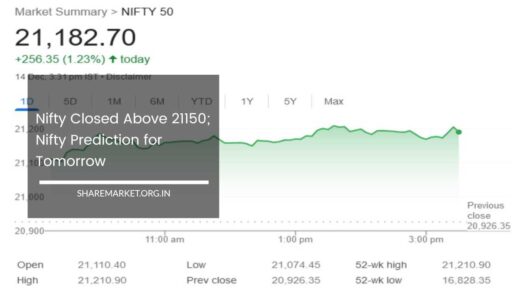Applying for Home Loan? Then Compare EMI

Home Loan EMI
Applying for a Home Loan? Then Compare EMIs
Owning a home is more than just a financial transaction; it’s a milestone that signifies stability, security, and personal achievement. For many, it’s a lifelong dream, representing the culmination of years of hard work and saving.
However, navigating the complexities of home financing can be overwhelming, especially with the array of loan options available. Understanding and comparing Equated Monthly Installments (EMIs) is a critical component of this process.
With varying interest rates, loan tenures, and processing fees offered by different lenders, making an informed choice requires a thorough comparison.
This guide will delve into the essentials of EMIs, the significance of comparing them, and how to make the best decision for your financial future.
Understanding EMIs
An Equated Monthly Installment (EMI) is a fixed amount paid monthly to the lender, which covers both the principal loan amount and the interest charged.
The EMI structure ensures that your loan repayment is predictable and manageable. Here’s a detailed breakdown of the factors that influence the EMI:
- Principal Amount: This is the total amount borrowed from the lender. A larger principal amount generally leads to higher EMIs, as more money is being repaid monthly.
- Interest Rate: This is the cost of borrowing, expressed as a percentage of the loan amount. The interest rate can be fixed or floating, and it significantly impacts the EMI. A higher interest rate increases the EMI, while a lower rate decreases it.
- Loan Tenure: The duration over which the loan is to be repaid. Longer tenures result in lower EMIs, but they also lead to higher total interest payments. Conversely, shorter tenures mean higher EMIs but less interest paid over the life of the loan.
Why Comparing EMIs is Essential
Comparing EMIs is crucial for several reasons, each of which plays a significant role in determining the best loan option for you:
- Affordability: Comparing EMIs helps you assess which loan fits comfortably within your monthly budget. It ensures that your monthly repayments are manageable and do not strain your finances. A higher EMI might be difficult to handle if it exceeds your budget, potentially leading to financial strain.
- Cost Savings: Even a marginal difference in interest rates can lead to substantial savings over the life of the loan. By comparing EMIs, you can identify which lender offers the most cost-effective loan in terms of overall repayment.
- Flexible Repayment Options: Different lenders provide various repayment options, such as step-up EMIs, where payments increase over time, or bullet repayments, where a lump sum payment is made at the end of the tenure. Comparing these options allows you to select one that aligns with your financial situation and future income expectations.
- Hidden Charges: Some lenders may impose additional charges, such as processing fees, administrative fees, or prepayment penalties. Comparing the total cost of loans, including these charges, ensures that you are fully aware of your financial commitment.
Factors Affecting EMI
While the principal amount, interest rate, and loan tenure are the primary factors affecting EMI, several additional elements also play a role in determining your monthly payments:
- Loan Type: Home loans can vary based on the borrower’s profile. For example, salaried individuals, self-employed professionals, and Non-Resident Indians (NRIs) may have different interest rates and terms. Understanding these variations can help you find the best option for your specific situation.
- Down Payment: A higher down payment reduces the loan amount, leading to lower EMIs. It also indicates your financial stability and reduces the lender’s risk, which can sometimes result in better loan terms.
- Processing Fees: Lenders often charge processing fees for handling your loan application. These fees can vary significantly between lenders and can impact the overall cost of the loan.
- Prepayment Charges: Some lenders impose penalties for repaying the loan before the end of the tenure. If you plan to make early repayments or foreclose the loan, it’s important to be aware of any associated charges.
- Interest Rate Type: Home loans are available with either fixed or floating interest rates. Fixed-rate loans have a constant interest rate throughout the tenure, providing stability in EMI amounts. Floating-rate loans, on the other hand, are linked to a benchmark rate (such as the repo rate) and can fluctuate, potentially affecting your EMI.
How to Calculate EMI
To calculate your EMI, you can use the following formula:
Where:
- P is the loan amount.
- R is the monthly interest rate (annual interest rate divided by 12).
- N is the number of monthly installments (loan tenure in years multiplied by 12).
This formula provides a basic understanding of how EMI is calculated. However, most lenders and financial websites offer EMI calculators that simplify this process.
By inputting the loan amount, tenure, and interest rate, these tools generate an accurate EMI amount, helping you quickly evaluate different loan options.
Tips for Comparing EMIs
When comparing EMIs from different lenders, consider the following tips to ensure you make the most informed decision:
- Check Interest Rates: The interest rate is a major factor influencing your EMI. Compare the rates offered by various lenders, as even a small difference can impact your monthly payments significantly.
- Consider Processing Fees: In addition to the interest rate, processing fees can affect the total cost of the loan. Ensure you factor in these fees when comparing loans.
- Look for Hidden Charges: Be cautious of hidden charges or penalties that may not be immediately obvious. These can include prepayment penalties, late payment fees, and administrative costs.
- Evaluate Repayment Options: Different lenders offer various repayment options. Consider whether you prefer a fixed EMI, step-up EMI, or bullet repayment, and choose the option that best fits your financial strategy.
- Check Customer Reviews: Research the reputation of different lenders by reading customer reviews. This can provide insights into their service quality, loan processing efficiency, and overall reliability.
- Use Online Tools: Utilize online EMI calculators and comparison tools to streamline the process. These tools can provide a quick and easy way to compare EMIs from multiple lenders based on your specific loan parameters.
EMI Comparison Tools
In today’s digital age, numerous online platforms and financial websites offer EMI comparison tools. These tools allow you to compare EMIs from various lenders by entering details such as loan amount, tenure, and interest rate. Key features of these tools include:
- Ease of Use: Online EMI calculators are user-friendly and require minimal information to generate accurate results. This makes it easy to compare multiple loan options quickly.
- Real-Time Comparisons: Many tools provide real-time comparisons, allowing you to see updated EMI figures as you adjust loan parameters.
- Detailed Breakdowns: Some calculators offer detailed breakdowns of your EMI, including principal and interest components, helping you understand the composition of your payments.
- Customization: Advanced tools allow you to customize comparisons based on additional parameters such as prepayment options and loan types.
Popular financial websites, banking portals, and dedicated financial apps often include these tools, making them easily accessible. Utilizing these resources can save you time and effort while providing valuable insights into your loan options.
Choosing the Right EMI
Selecting the ideal EMI involves evaluating your financial situation and preferences. Consider the following factors when making your decision:
- Budget: Ensure that the EMI fits comfortably within your monthly budget. Your EMI should be manageable and should not exceed your financial capacity, allowing you to cover other expenses and savings.
- Financial Goals: Assess how the EMI fits with your overall financial goals. Consider whether the loan repayment will impact your ability to save for other objectives, such as retirement or education.
- Emergency Fund: Maintain an emergency fund to cover unexpected expenses. Ensure that your EMI does not deplete your financial reserves or leave you without a safety net.
- Risk Appetite: Decide whether you prefer the stability of a fixed-rate loan or the potential savings of a floating-rate loan. Fixed-rate loans offer consistent EMI payments, while floating-rate loans may offer lower rates in a declining interest rate environment but come with the risk of fluctuating payments.
Additional Considerations
In addition to the basic factors discussed, there are several other considerations that can influence your home loan decision:
- Loan Prepayment: If you anticipate having the ability to make extra payments towards your loan, look for lenders who offer flexible prepayment options without substantial penalties. Prepayment can help reduce the principal amount and overall interest paid.
- Loan Transfer: If you find a better loan offer with another lender after your loan is sanctioned, consider the option of transferring your existing loan. Loan transfers can sometimes offer better terms or lower interest rates, though they may involve additional fees and paperwork.
- Loan Insurance: Some lenders offer loan insurance products that protect you in case of unforeseen circumstances such as disability or death. Consider whether this insurance is a worthwhile addition to your loan package.
Final Remarks
Comparing EMIs is a crucial step in the home loan process, providing a clear understanding of your financial commitment and helping you make an informed decision.
By evaluating various loan options based on interest rates, processing fees, repayment options, and additional charges, you can select a home loan that aligns with your financial goals and minimizes your overall financial burden.
Remember to use online comparison tools, read customer reviews, and consider factors such as your budget, financial goals, and risk appetite when making your decision.
By taking a systematic approach to comparing EMIs, you can ensure that you choose a loan that supports your journey to homeownership while maintaining financial stability and peace of mind.


















